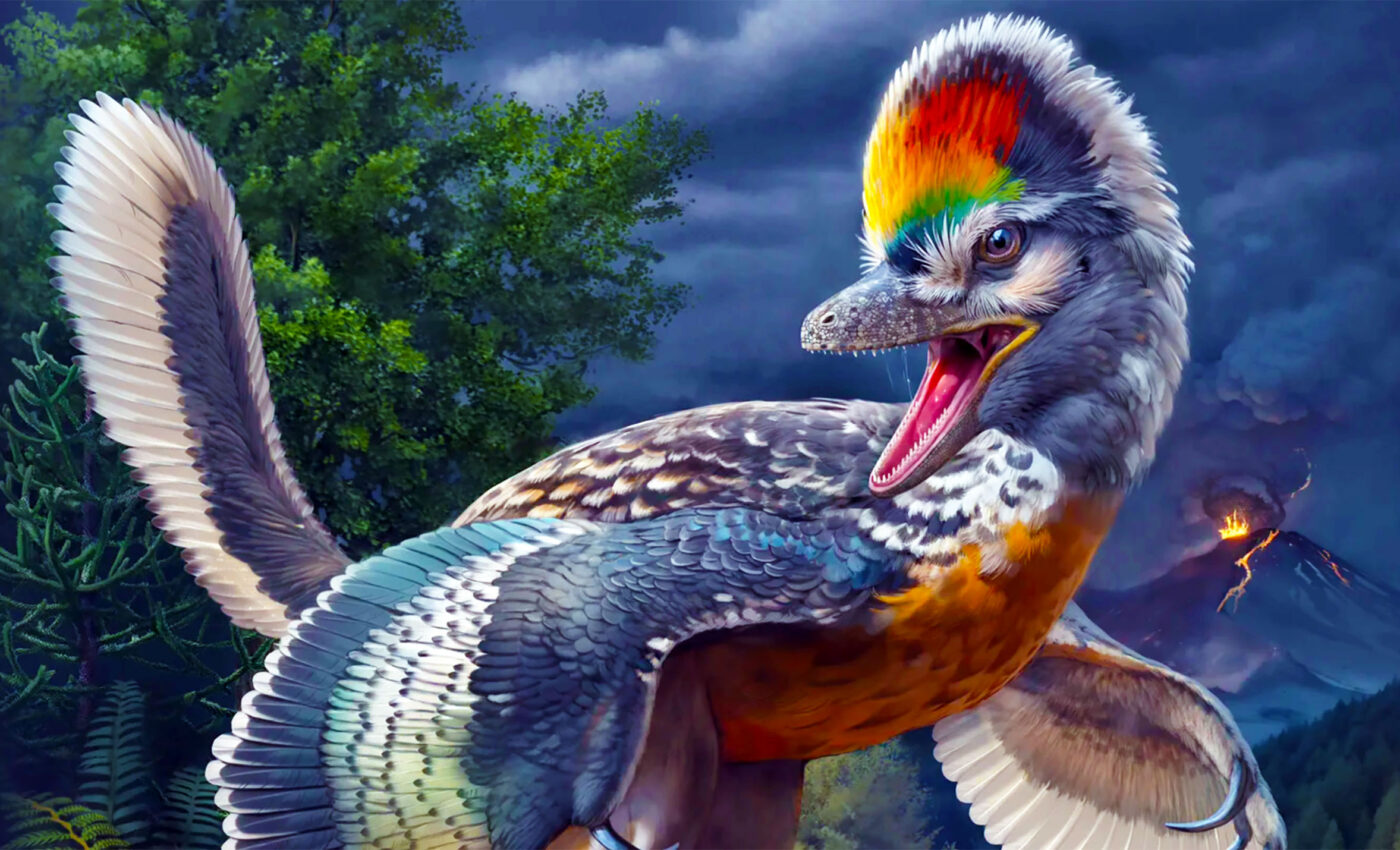
New extinct species provides a glimpse into early bird evolution
The story of early bird evolution has long fascinated scientists. It is well-established that birds descended from theropod dinosaurs, a transition occurring by the Late Jurassic period.
However, there are still gaps in this evolutionary story that have been challenging to fill due to a limited variety of fossils from the Jurassic era, which ended around 145 million years ago.
Fujianvenator prodigiosus
Researchers have recently described the discovery of a 150-million-year-old avialan theropod found in Zhenghe County, Fujian Province. The skeletal remains are shedding new light on the earliest days of bird evolution.
The research was a collaboration between the Institute of Vertebrate Paleontology and Paleoanthropology (IVPP) of the Chinese Academy of Sciences in Beijing and the Fujian Institute of Geological Survey (FIGS).
The new species, named Fujianvenator prodigiosus, has a skeletal structure that reflects characteristics shared with avialans, troodontids, and dromaeosaurids. This highlights the complexity of the pathways which emerged during early bird evolution.
Unique characteristics
Dr. WANG Min from IVPP, the study’s co-lead author, remarked on the species’ unique characteristics:
“Our comparative analyses show that marked changes in body plan occurred along the early avialan line, which is largely driven by the forelimb, eventually giving rise to the typical bird limb proportion.”
“However, Fujianvenator is an odd species that diverged from this main trajectory and evolved bizarre hindlimb architecture.”
Diverse ecosystem
Certain features of Fujianvenator suggest it thrived in a swamp-like habitat and could have been adapted for rapid movement, or perhaps functioned as a long-legged wader. Researchers previously did not associate such an ecological role with early avialans.
But Fujianvenator wasn’t alone in its environment. XU Liming from FIGS is the co-lead author of the study. He explained, “Besides Fujianvenator, we have found abundant other vertebrates, including teleosts, testudines and choristoderes.” This paints a vivid picture of a diverse and dynamic Late Jurassic ecosystem.
Zhenghe Fauna
Furthermore, the region’s geological history provides context for this discovery. During the Late Jurassic–Early Cretaceous transition, southeastern China underwent significant tectonic changes due to the subduction of the paleo-Pacific plate. This activity birthed a landscape similar to where the older Yanliao Biota is preserved.
“The extraordinary diversity, unique vertebrate composition, and paleoenvironment strongly indicate that this locality documents a terrestrial fauna, which we named the Zhenghe Fauna,” said study co-author Dr. ZHOU Zhonghe.
Researchers pinpoint the fauna’s age between 150-148 Ma. This makes Fujianvenator one of the youngest and most southerly members of Jurassic avialans.
The Zhenghe Fauna reveals a snapshot of the Late Jurassic’s terrestrial world, and the joint research teams are eager to continue unraveling its secrets.
More about early bird evolution
The evolution of birds is a fascinating journey that stretches back over 150 million years. Here’s a brief overview of some of the milestones in early bird evolution:
Dinosaur lineage
Birds belong to the group called theropods, the mostly meat-eating dinosaurs that include the Tyrannosaurus rex and the Velociraptor.
One of the most groundbreaking realizations in paleontology was the discovery that birds didn’t just evolve from dinosaurs. They ARE dinosaurs.
Archaeopteryx
Found in the Late Jurassic limestones of Germany, Archaeopteryx is one of the most famous transitional fossils. It lived about 150 million years ago and had features of both birds and dinosaurs. It had feathers and could possibly fly, but it also had teeth, a bony tail, and claws at the end of its wings.
Avialae
This is a group within theropods that includes all modern birds and their closest fossil relatives. As the press release mentioned, the earliest evolution of the Avialae has been difficult to piece together due to limited fossil records.
Feathers
The discovery of feathered fossils in China, particularly from the Yanliao Biota and the Jehol Biota, revolutionized our understanding of early bird evolution.
It has become clear that many theropods, not just the direct ancestors of birds, had feathers of some kind. Feathers might not have evolved for flight initially but possibly for insulation or display.
Physiological changes
Over time, several physiological changes occurred in theropods, setting the stage for the emergence of birds. These included the hollowing out of bones, making them lighter; the shift of the center of gravity to the hip area for better balance during flight; and the evolution of a wishbone.
Diverse early birds
The early Cretaceous period (around 130-120 million years ago) in China has provided fossils of a variety of early bird species. These discoveries have revealed that early birds were much more diverse in size, habitat, and behavior than previously thought.
Flight
There’s an ongoing debate about how flight evolved. The two main theories are the “trees-down” hypothesis (birds first glided down from trees) and the “ground-up” hypothesis (birds developed flight from running on the ground). Both theories have their sets of supporting evidence.
The research is published in the journal Nature.
—
Like what you read? Subscribe to our newsletter for engaging articles, exclusive content, and the latest updates.
—
Check us out on EarthSnap, a free app brought to you by Eric Ralls and Earth.com.













